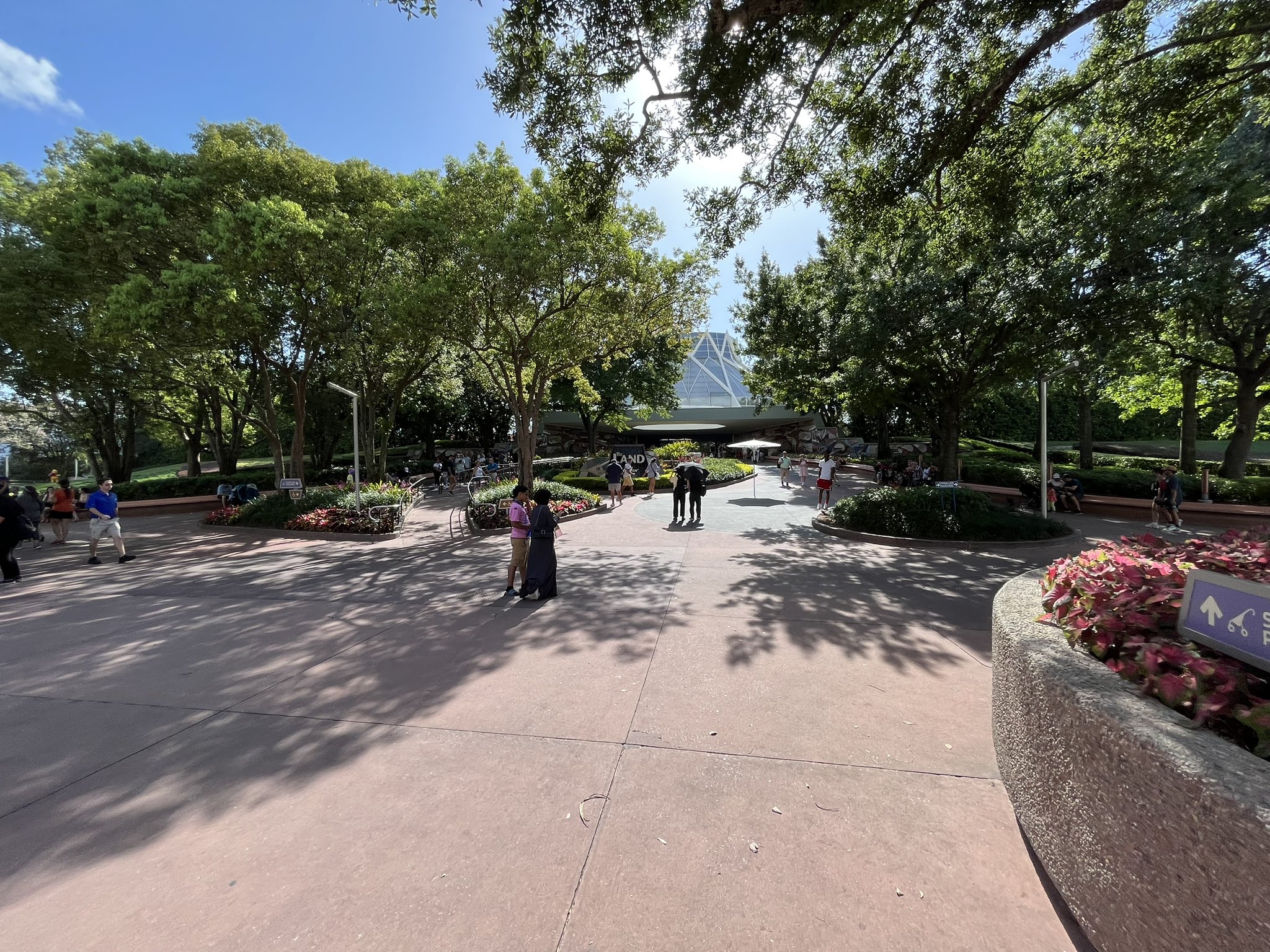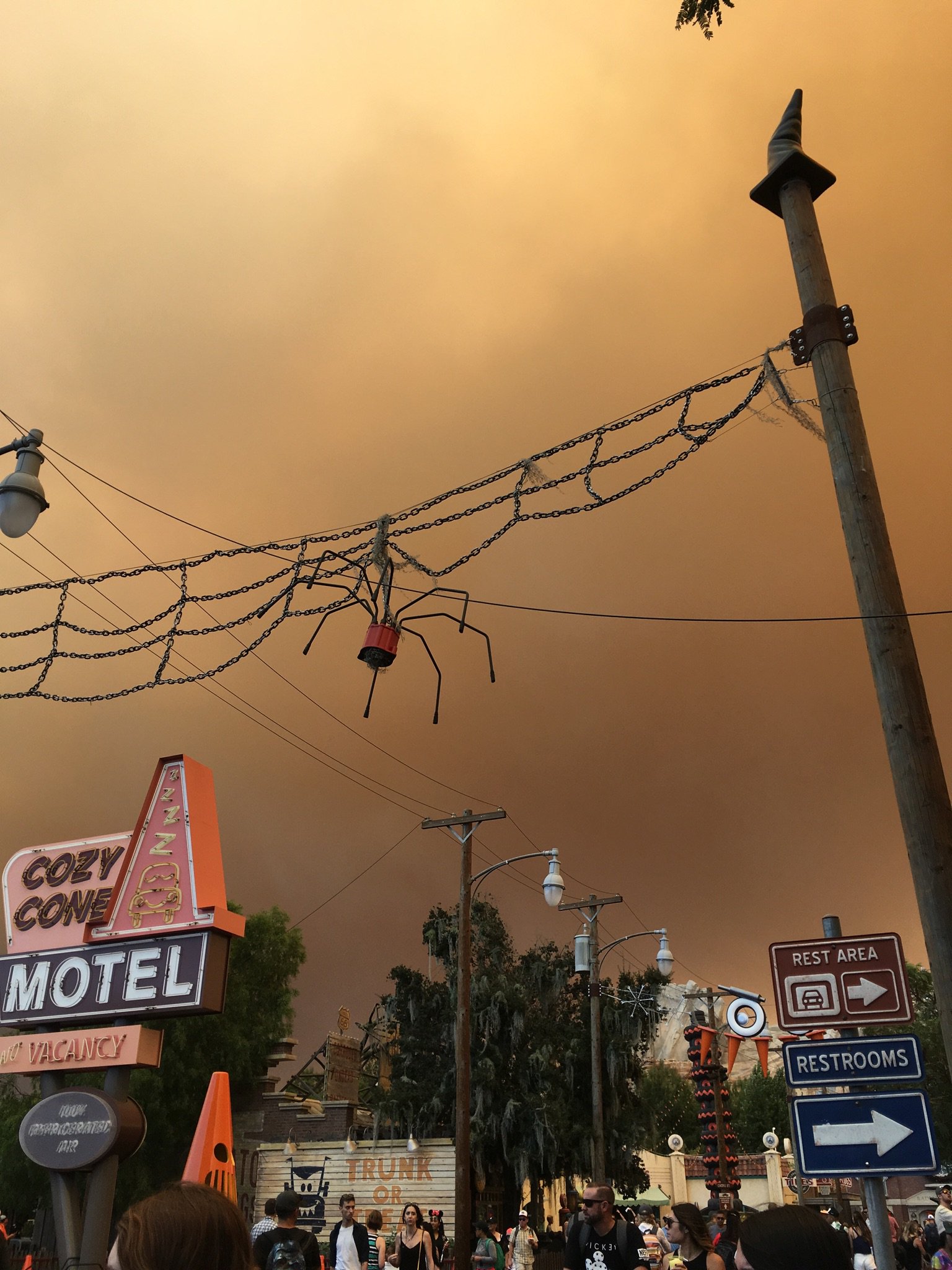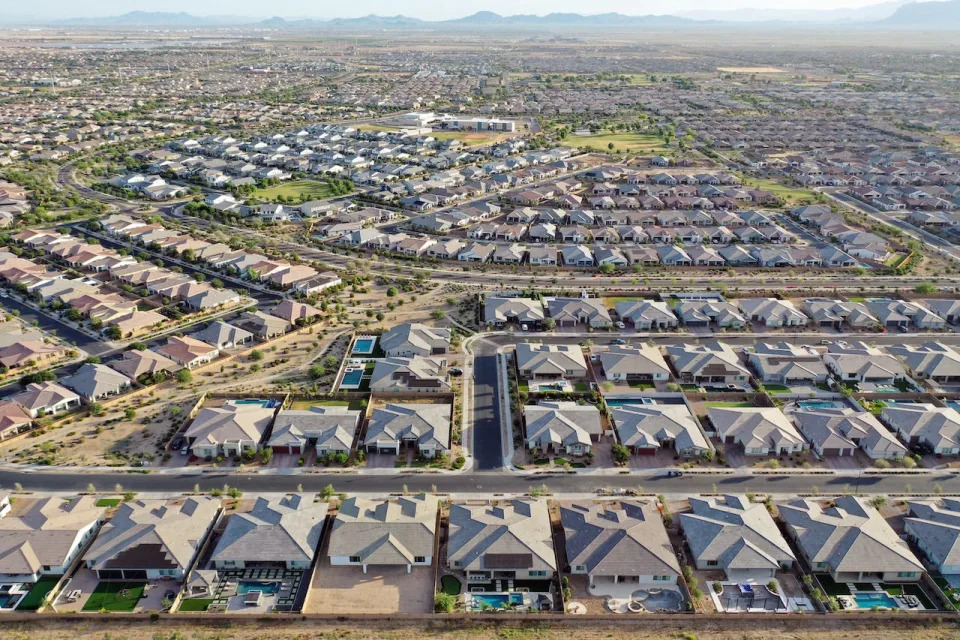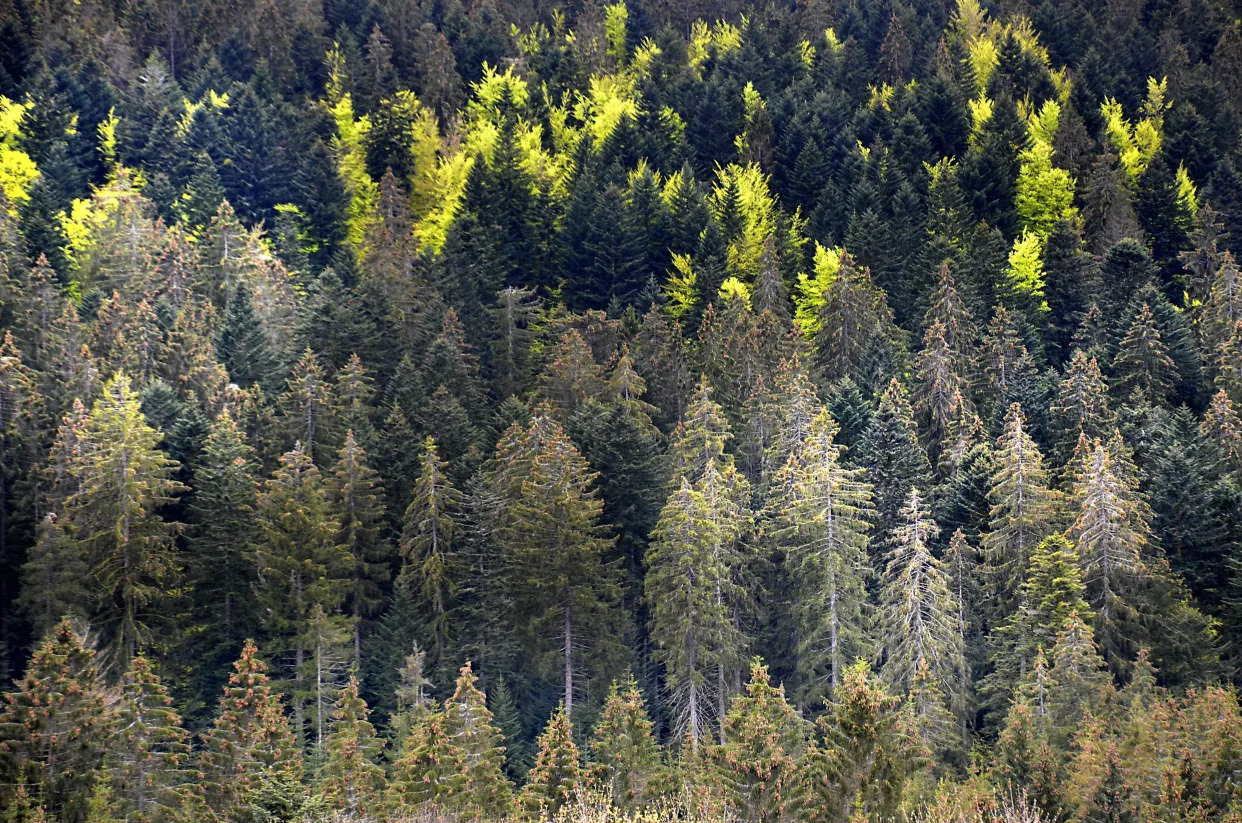Civil Eats
This Network of Regenerative Farmers Is Rethinking Chicken
The team at Tree-Range Farms is pioneering an approach to raising chickens and trees in tandem, storing more carbon and water in the soil while providing an entry point for new and BIPOC farmers often left out of the conventional system.
By Twilight Greenaway – August 16, 2023
 Reginaldo Haslett-Marroquin, the founder of the Regenerative Agriculture Alliance and co-founder of Tree-Range Farms. Together the nonprofit and for-profit business have created an “ecosystem” that includes more than 40 farms and a processing plant in the Upper Midwest. (Photo credit: Leia Marasovich, Farmer’s Footprint)
Reginaldo Haslett-Marroquin, the founder of the Regenerative Agriculture Alliance and co-founder of Tree-Range Farms. Together the nonprofit and for-profit business have created an “ecosystem” that includes more than 40 farms and a processing plant in the Upper Midwest. (Photo credit: Leia Marasovich, Farmer’s Footprint)
This article was produced in partnership with Edible Communities; a version of this article will appear in future issues of local Edible magazines.
When you approach the poultry paddocks at Salvatierra Farms outside Northfield, Minnesota, you might not notice how many chickens are hiding among the tall grasses and young hazelnut trees at first. And that’s by design.
On a warm afternoon in June, 1,500 7-week-old hens had come out to mill around—lured by feed and water stations—but many were hard to find.
“There’s an eagle that comes around here,” says Reginaldo Haslett-Marroquin, the farmer and visionary behind the operation. “It has flown over a few times, and it just keeps going.” Soon, he adds, the trees and other perennials will be tall enough to provide cover for the birds, but the grass will suffice in the meantime.

One of several flocks raised at Organic Compound Farm in Fairibault, Minnesota, which helped pioneer and has been using the Tree-Range system for six years. (Photo courtesy of Wil Crombe/Organic Compound.)
Salvatierra, which was a conventional corn and soy operation until Haslett-Marroquin bought it three years ago, is in the midst of a wholesale transformation. He has planted more than 8,000 hazelnut trees there, created a water catchment pond, begun managing the forest that frames it on two sides, and leveled the land where he plans to build a home for his family.
This summer, he also raised the first flocks of chickens there. As it comes into maturity, Salvatierra stands to become a central hub around which a growing network of farmers, scientists, nonprofits, and funders will rotate—all in the name of regenerative poultry farming.
Regenerative is a complex term with many interpretations. Haslett-Marroquin’s approach combines what he learned growing up in Guatemala—where chickens thrive in multi-story jungles—with a deep understanding of the Midwest’s native ecosystems. Unlike the pasture-based model of poultry production which typically uses mobile barns and is sometimes also referred to as “regenerative,” it involves raising the birds in one spot, alongside trees and other perennial crops as a way to build soil that is rich with organic matter and carbon, capture and store water, and make the land on which it takes place more resilient in the face of the climate crisis.

The birds are fed outdoors, and the placement of the feeders help draw them out of their barns to eat insects and some plants. (Photo courtesy of Wil Crombe/Organic Compound.)
At the core of the effort in Minnesota is Tree-Range Farms, the company Haslett-Marroquin co-founded, and a growing network that includes more than 40 farms in the region. The Regenerative Agriculture Alliance (RAA), the nonprofit he founded and now sits on the board of, also plays a key, ongoing role in developing the infrastructure behind the network and has plans to scale it up to extend across the upper portion of the corn belt.
“Everything that is part of the standard was tried and tested, from breeds to how long you feed them, to the right kind of welfare aspect to consider in the coop construction.”
But the grand vision doesn’t end there. There are also farms using Haslett-Marroquin’s approach in Guatemala, Mexico, and in several Native American communities, including the Pine Ridge Reservation in South Dakota. And if its advocates have their way, the core practices and the philosophy behind it could be replicated in many parts of the world in the years to come.
And at a time when Americans eat more than 160 million servings of chicken every day and industrial poultry farming is known for polluting ground water, air, and waterways, as well as causing health issues for people who live nearby, it could be a welcome change.
How the Model Works
Like the chickens hiding in the grass, the sophistication of Haslett-Marroquin’s regenerative poultry system may be hard to spot for the untrained eye.
For years, he collaborated on research and development on his first farm, Finca Marisol, and on a nearby farm called Organic Compound in Faribault, Minnesota, to establish a production standard with very specific parameters.
Each poultry flock or “unit” includes 1,500 chickens, a barn, and 1.5 acres of land divided into two fenced in areas, or paddocks. The birds spend every day outside—where they eat a combination of dry grain, sprouted grain, bugs, and plants—in one paddock, and when the plants there have been sufficiently grazed down, they’re moved to a second one. Farms typically start with one unit, but they can also opt to start with half a unit if land is scarce.

Each flock in the Tree-Range system is made up of 1,500 birds on 1.5 acres of land. Most farmers raise more than one flock. (Photo courtesy of Wil Crombe/Organic Compound.)
“Everything that is part of the standard was tried and tested, from breeds to how long you feed them, to the right kind of welfare aspect to consider in the coop construction,” says Diane Christofore, the current executive director of the RAA, which brought in the funding for the research and development behind the standard. The organization recently launched an online course to train farmers in the practices and philosophy behind the standard; it is also making a number of scholarships available and will release a version in Spanish soon.
In addition to trees, farmers are encouraged to plant other perennials such as grasses, elderberry bushes, and comfrey. And if they grow corn and soybeans on the property, they are invited to diversify their rotations by adding oats for soil health. In eight to 12 weeks, farmers can take the birds to the small-scale processing plant that the RAA runs in Northern Iowa.
If they opt to sell them under the Tree-Range label, storage, distribution, and marketing are all taken care of, as the birds make their way to consumers in the Minneapolis-St. Paul region. Soon, Tree-Range plans to expand its reach to add retailers in Madison, Milwaukee, and Chicago.
The hope is to provide a relatively easy point of entry for beginning and immigrant farmers looking for a way to start earning capital quickly. With their short lifecycle and relevance across many cultures, chickens allow farmers to get onboard and join the network—or the “ecosystem,” as RAA refers to it—while renting land and/or working other jobs. Once the barn has been built—or adapted from an existing structure—the required labor is concentrated in the mornings and evenings, making it a relatively easy lift for new farmers.
“We’re creating this for the people that don’t have access to the [resources to engage in large-scale agriculture], but you’re also working with people who are still engaged in conventional ag, watching this, and asking, ‘How could I transition?’” says Christofore.
Many of farms raising birds for Tree-Range are run by former immigrants, such as Callejas Farm, where Jose and Erica Callejas, formerly from El Salvador, raise multiple flocks of chickens each year with their daughters. Or Carrillo Brother Farms, where Jesus and Aldo Carrillo—who immigrated from Mexico—raise one flock a year alongside a wide array of fruit and vegetables.
Feed the People Farm Cooperative is another interesting example. There, Cliff Martin has been raising two flocks a year on land that his dad owns as part of a collective with three other young farmers, including Helen Forsythe and Bec Ersek (who also works at the RAA’s business administrator).
They see the farm as part of a larger collective movement and the money they earn from the flocks goes toward maintaining the land, holding trainings and events for other young community organizers in the region. They’re also working on adding a composting processing site, neighbor approval pending. “We simply wouldn’t be doing this if it weren’t for the RAA’s infrastructure and support,” Forsythe said during a recent farm visit.
Haslett-Marroquin says there are more interested farmers than the RAA has the bandwidth to support at this point, so he’s confident that the network will continue to grow.
For one, he says, the modular approach to adding flocks to farms makes it relatively simple to replicate. After years of prototyping the system at Finca Marisol, he says everything fell into place very quickly at Salvatierra Farms, where he is starting with three units and plans to add three more in the coming year.
“There was no guesswork,” he says. “This thing happened as if I had done it a million times. And we could take 1,000 acres, 10,000 acres, or 1 million acres, and we’d know exactly what to do. That’s the difference between farm-level thinking and system-level thinking. And at the end, it’s that large scale that makes it truly regenerative, not the farm itself.”
Feed conversion ratio—or the relationship between the feed that goes into the animals and the final product—is a common metric for measuring financial success and environmental impact in meat production. But the RAA’s definition of regenerative turns that equation on its end.
“We are unleashing the original Indigenous intellect that makes us so powerful as human beings.”
The chickens in that system eat more grain than chickens raised solely in a barn because they move around much more. But the farms have an overall smaller footprint, because the added chicken manure boosts the productivity of the hazelnuts and other companion crops, without synthetic fertilizer. On 1.5 acres, mature hazelnut trees will produce around 800 to 1,200 pounds of nuts.
“Once you add up the output of meat, the output of hazelnuts, the large-scale sequestration of carbon,” Haslett-Marroquin says, “you can’t even compare it to a confinement model. It’s not apples to apples.”
At the core, his approach to food production is one that places productivity within a larger context of a balanced living system. It’s about “stewarding the transformation of energy from non-edible forms to edible ones,” and it’s a process that isn’t new, but on the contrary, quite old.
“We are unleashing the original Indigenous intellect that makes us so powerful as human beings. It is the one thing that all capitalistic, extractive, destructive systems hate. That’s why they will go and massacre Indigenous communities at mass scale, because they know that that intellect is so powerful that it can overcome the extractive system. And it can, in the end, save the planet,” he says, adding, “If you restore the people to the land, you can’t exploit them.”

The young farmers at Feed the People Farm, a collective operation that works with Tree-Range. (Photo courtesy of the Regenerative Agriculture Alliance)
The Science
Haslett-Marroquin is confident that the system he has developed works, but he knows that Western scientific research is key to scaling it up.
Beth Fisher, a soil scientists and assistant professor at Minnesota State University, Mankato, is part of a team of scientists in Minnesota that started measuring the health of the soil, water, and the emissions released from farms in 2021.
Fisher says she was approached by Haslett-Marroquin, who asked her to gather evidence to add validation to what he had long observed and understood intuitively about the way regenerative practices work on the ground. She was interested in the approach, but it was the visit to Finca Marisol, the first farm where birds and trees had been raised side by side for almost a dozen years, that sealed the deal.
“The soil structure is beautiful—you pull up a scoop and how it holds together on its own, is held together by the ooey gooey stuff that organic critters put into the soil,” she says. “Water infiltrates beautifully. It has a wonderful collection of organic matter.”
Since then, she and the undergraduate students she works with have been gathering samples of soil on a handful of farms in the network, as well as conventional corn and soy farms that neighbor them.
“At Finca Marisol, the comparison farm is considered reduced-till better practice. And it’s night and day; the [water] infiltration is way slower on the reduced till practice, the carbon storage is way less, and that farmer has been doing it for decades, really trying to do better in his practice. And the effect on his soil is negligible,” she says.
“At The Organic Compound, where they’ve raising chickens using regenerative practices for six years, they’re already in better shape than the neighboring conventional farm,” adds Fisher, who is hoping to start publishing some preliminary data soon.

Farmer and Tree-Range Farms co-founder Wil Crombie stands among the mature chestnut trees at the Organic Compound in June 2023. (Photo by Twilight Greenaway)
“We’ll be disseminating the results, both in the academic peer-reviewed literature, but also, I think it’s so important for it to find its way into the context where farmers can hear about it.”
Carrie Jennings, who is research and policy director at the nonprofit Freshwater, and an adjunct professor and researcher at the University of Minnesota, is another scientist engaged in the research. She points to the fact that the Cannon River, which runs through Minnesota and down to the Mississippi River, is one of the bodies of water that is most polluted by agriculture chemicals in the nation.
“The soil structure is beautiful…Water infiltrates beautifully. It has a wonderful collection of organic matter.”
And she has seen strong initial evidence that regenerative poultry system is sending water down into the aquifers below, rather than adding to that pollution. This is rare in Minnesota and other the parts of the corn belt, where the water on millions of acres drain directly to waterways due to the ceramic pipes, or drainage tiles, that were installed below farmland over the last century. The roots of the trees and other perennial plants on the farms in the RAA network, however, often break up and clog the tiles, preventing runoff and sending the water into the aquifer below.
Jennings is closely tracking the funds Minnesota is directing toward regenerative practices. “We want to make sure they’re funding the right practices; we don’t want them throwing away tax money on things that aren’t going to improve water, soil, and climate,” she says.
Jennings also wants to provide hard evidence for farmers looking to change their practices. “Farmers notice that their lives and waters are degrading over generations, and even within a generation. They’re not exactly happy about it, either. They know that they’re spending more than they should on chemicals. So, if someone like Regi[naldo], who is innovative and experimental entrepreneurial, can show that this works then it’s more likely to be adopted.”
She also points to the fact that General Mills has been funding the research for the first two years, as evidence of the potentially influential nature of Haslett-Marroquin’s approach. “They need to make sure [crops] can continue to be grown in this rapidly changing world. It’s important to the companies and the consumers of those products,” she adds.
Today’s food system is complex.
In addition to the research, General Mills is also funding the RAA’s farmer training and the establishment of its demonstration farm. “We have been inspired by the RAA’s thought leadership and continue to learn from the deep and holistic way they approach regenerative agriculture,” said a company representative in a statement to Civil Eats.
RAA collaborated with Oatly, General Mills, and number of other nonprofit and research entities in the region, on a $5 million climate-smart commodities grant from the U.S. Department of Agriculture (USDA) aimed at “support[ing] poultry producers who follow diversified, regenerative, climate-smart grain production methods incorporating small grains such as oats, no-till, and cover crops, integrated agroforestry practices.”
“It’s an opportunity now to start to produce grains within [the regenerative] system, because 70 percent of the cost to farm business is feed,” says Christofore.
Rethinking Processing and Growing the Network
Lack of accessible meat processing is a common barrier to entry for small-scale poultry producers. So, in prototyping a regional network of producers, the RAA—whose express goal is to make regenerative poultry production the norm—has invested in its own processing facility as a separate LLC.
A relatively small building in Northern Iowa—just over an hour south of Northfield—the facility was acquired in late 2021. That first year, the small staff processed 1,000 chickens. In 2022, it processed 50,000, and manager Arnulfo Perrera says he hopes to reach 80,000 to 90,000 birds this year.
After attending agricultural school in Honduras, Perrera came to the U.S. to work as a manager for Smithfield Foods, the nation’s largest pork producer. “That was not really like my calling—raising hogs in barns in the conventional systems,” he says of the experience.
A decade later, with a long-awaited green card, Perrera was able to leave Smithfield to take a role managing the RAA processing plant in 2022. Since leaving what he calls “the dark side,” he has staffed it up 14 people, despite its isolated rural location and the challenge of competing with larger companies in the region that can offer higher pay.

The Regenerative Ag Alliance processing team. (Photo courtesy of the Regenerative Agriculture Alliance)
But, ultimately, Perrera hopes to help create a new model, in an industry where ever-faster line speeds, crowded facilities, underage workers, and resistance to protecting workers’ health have become the norm. “I believe strongly that if the food is going to be sustainable and regenerative, it needs to be that way throughout [the food chain]. On the farm side, as well as the processing,” he says.
For Jose Morales, who has been at the plant since the RAA took ownership, the difference is palpable. The facility he worked at previously slaughtered 13,000 chickens every day of the year; 2,000 workers arrived in three shifts and worked 24 hours a day. He felt like one small cog in an enormous machine.
At the RAA facility, Morales says, he has had a say in shaping the workday and he’s helped train other employees. “We came up with a plan. Each person will be doing each job for two, maybe two and a half hours. So, you’re not doing the same thing all day.” It’s less repetitive motion, which is less difficult on everyone’s bodies, and all the workers at the plant are trained to work in all the roles. “It’s harder in the beginning, but then it’s better. When somebody’s calls in sick, or they don’t have a babysitter, we have somebody to call.”
Nonprofit meat processing plants are very rare, but Christifore, Haslett-Marroquin, and the rest of the team see the fact that they don’t have shareholders to appease as key to their approach.
The goal is to enable the proliferation and growth of the network of farms, and provide better jobs than many meat processing facilities. “If you’re doing it with integrity, there is not a lot of money to be made at that level of the supply chain,” says Christofore.
In stepping down from leading the RAA, Hasslet-Morroquin hopes the network moves toward a collective model of leadership based on a Mayan diagram that looks more like a circle than a pyramid. The idea is to create a strong system wherein everybody leads and follows at the same time, a reciprocal form of relationship-based accountability. “And if you do that, you unleash the energy of the people, and it is unbelievable. That’s why we call this an intellectual insurgency.”
Christofore echoes that idea. “We expect a certain level of participation, from those who want to commit to the ecosystem. And that’s when you start to care about things; it’s when you start to have ownership. It comes with a lot of responsibility and does require risk. But what comes with it is an opportunity to be a part of a culture and a community that’s growing.”
Hasslet-Morroquin has his sights set on reaching 250 farms on 50,000 acres in Minnesota, Iowa, and Wisconsin. From there, he can see the network expanding to five or six other regions around the U.S. until it reaches 500 million chickens. That type of growth sounds enormous, but it would still only be 5 percent of the total chicken raised in the U.S. And at that point, he says, a truly regenerative system would have some real leverage.
“At that point, we’ll look at the industry—the USDA, investors, markets, everybody, and say, ‘OK, folks, why should we only do 5 percent of the total poultry system this way when we can do 100 percent?’” says the visionary farmer. “I may not get there myself, but somebody else could get us there. It doesn’t matter how long it takes. We don’t plan for the next year to two; this is about the seven generations in front of us.”

Twilight Greenaway is the executive editor of Civil Eats. Her articles about food and farming have appeared in The New York Times, NPR.org, The Guardian, Food and Wine, Gastronomica, and Grist, among other.
















